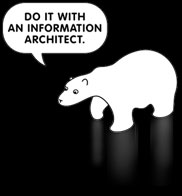
Conclusion: Napkee is a very interesting tool and a useful add-on if you are working with Balsamiq Mockups. It integrates smoothly into your prototyping workflow. For $49 you get good functionality. If you are a little bit into coding, you get a great opportunity to finetune your mockups and prototypes. (my other reviews)
Prototyping and testing during the early stages of a project is the key for a successful desktop or web application. This is the ultimate goal of Napkee. [...] Napkee supports most of the controls you can find in Balsamiq Mockups. [...] Napkee supports two project natures: web and flex. The first one generates a set of HTML, CSS and Javascript files and the second one generates a Flex Builder 3-ready project. In this nature you can also generate standalone code: from Napkee's preferences you can choose either to export to a web flex project or to an AIR one.
Nachdem sich ja meine letzte Review mit Balsamiq Mockups befasst hat, möchte ich Euch heute Napkee vorstellen. Napkee nennt sich selbst "Balsamiqs bester Kumpel" und versteht sich als Ergänzung dazu. Auch bei Napkee handelt es sich um eine Adobe Air Anwendung. Das hat den großen Vorteil, dass man Plattform-übergreifend arbeiten kann - sofern man Adobe Air installiert hat.
Der Entwickler von Napkee, Enrico Berti, sagte mir, dass er Napkee hauptsächlich programmiert habe um ein einfach tragbares Format für Balsamiq Dateien zu haben. Bislang war es ja bei Balsamiq so, dass man entweder die Arbeitsdatei oder Bilder seiner Wireframes beispielsweise an Kunden schicken konnte - aber es gab keinen Viewer oder so etwas.
Mittlerweile gibt es in Balsamiq einen wirklich recht guten PDF Export bei dem sogar Interaktionen erhalten bleiben. Wie dem auch sein, man kann aber auch eben Napkee hinzuziehen um aus seinen verlinkten Wireframes einen recht hübschen Prototyp zu machen.
Nachfolgendes Bild zeigt links Napkee und rechts Balsamiq.

Nun, wie funktioniert also die Arbeitsweise mit Napkee? In Napkee selbst kann man auf einfache Weise keine Wireframes erstellen, hierzu benötigt man eben Balsamiq Mockups. Im Idealfall hat man beide Programme nebeneinander offen und arbeitet in Balsamiq. Sobald man dort seine Änderungen gespeichert hat, werden diese automatisch in Napkee übernommen. Man muss natürlich vorher das Balsamiq Projekt (oder die verschiedenen Files) in Napkee importieren.
Dieser Auto-Update klappt oft sehr gut. Napkee versucht auf seine Art die Informationen zu rendern, die es von Balsamiq rein bekommt... das kann teilweise wirklich sehr gut aussehen, teilweise aber auch suboptimal sein.
Beispielsweise wird die Street Map Balsamiq-Komponente in Napkee in der Preview gar nicht angezeigt und die Cover Flow Komponente tut sich manchmal mit der Skalierung etwas schwer.
Napkee hat eine voll funktionierende Vorschau-Sicht. Hiermit wird man wohl meistens arbeiten. Nachfolgendes Bild zeigt links Napkee im Preview mode und rechts Balsamiq. Wie man sieht versucht Balsamiq sein bestes - aber ganz identisch ist es nicht. Na ja, natürlich ist die Frage, ob so etwas stört? Immerhin handelt es sich ja um Prototypen und nicht um das fertige Design.

Neben der Preview Sicht gibt es noch andere Sichten, die aber wohl nur für Frontend Entwickler interessant sind. Hier kann man sich richtig schön die Hände schmutzig machen und mit JavaScript, CSS, HTML oder der Balsamiq Markup Language arbeiten.

Diese Option zu haben ist sicherlich klasse. Man muss allerdings wissen was man tut.
Exportiert man ein Balsamiq Projekt aus Napkee heraus (und zwar in der Web Einstellung), so legt Napkee einen Ordner mit verschiedenen Unterordnern an (siehe nachfolgendes Bild). Darin befinden sich auch die HTML-Seiten die man aufrufen muss um sein Prototyp zu sehen. Im Endeffekt handelt es sich bei den Prototyp Files um eingebettete Flash Dateien (swf). Das hat den großen Vorteil, dass Napkee Prototypen in allen Browsern gleich aussehen.

Fazit
Napkee ist in wirklich sehr interessanter Zusatz zu Balsamiq Mockups. Wer Balsamiq nicht benutzt wird auch mit Napkee nicht viel anfangen können.
Der generierte Quelltext ist wirklich brauchbar. Falls man sowieso aus der Flash Ecke kommt und auch schon mit Adobe Flex Erfahrung gesammelt hat, wird man Napkee bestimmt noch mehr mögen und die Möglichkeiten schätzen von Hand im Quelltext einiges feinjustieren zu können.

Ich kann jedem empfehlen sich Napkee mal anzuschauen und die Testversion zu installieren.
Eine Lizenz kostet zur Zeit $49, was etwa 33 Euro sind (siehe Preise). Das ist nicht teuer, aber man überlegt sich schon zwei mal, ob man das Programm überhaupt braucht.
Ich denke, dass Napke gerade für Flash Entwickler wirklich interessant sein könnte.
Hier geht es zu einem kurzen Demo Video.
Es wird viele freuen zu hören, dass Napkee für Studenten und Lehrer kostenlos ist. Und auch sonst gibt es noch einige Möglichkeiten Napkee kostenlos (aber legal) zu bekommen.
Der Entwickler von Napkee, Enrico Berti, sagte mir, dass er ständig an Napkee arbeitet und sein Tool permanent verbessert. Ein großer Punkt auf seiner Liste sind verbesserte Export-Funktionen. Da wird sich in naher Zukunft sicherlich noch einiges tun. Es bleibt also spannend und Ihr solltet die Napkee Website nicht aus den Augen lassen.
Reviews











